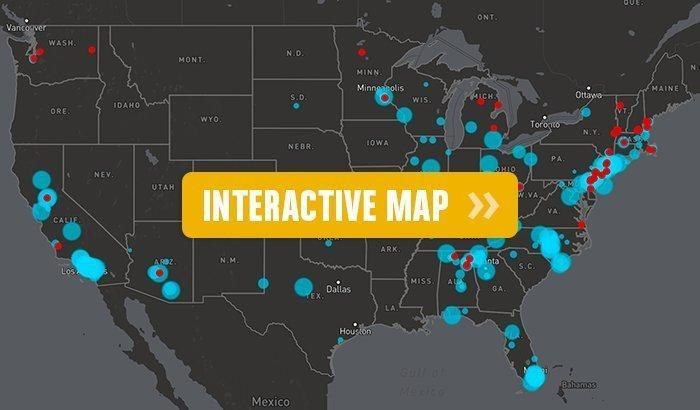Interactive Map Shows Where Tap Water Is Contaminated With PFCs
Published on by Water Network Research, Official research team of The Water Network in Academic
Here's an interactive map that combines federal drinking water data and information on all publicly documented cases of PFAS pollution from manufacturing plants, military air bases, civilian airports and fire training sites.
EWG and the Social Science Environmental Health Research Institute at Northeastern collaborated to produce it.

On the map, blue circles show public water systems where PFCs were detected in public drinking water systems – the larger the circle, the more people served by the system.
Clicking on a circle brings up detailed information, including contamination levels. Red dots indicate a contamination site in Northeastern's PFAS Contamination Site Tracker. Clicking on a dot brings up detailed information and links to more information and resources from the Institute.
The map, which will be updated as more contamination is discovered, is the most comprehensive resource available to track PFC pollution in the U.S. Its release coincides with a major PFAS conference June 14 and 15 at Northeastern which will bring together scientists, regulators, activists and others to examine a class of pollutants that contaminate water, soil, and the bodies of animals and people worldwide but were little known until recently.
The map focuses on the most well-studied fluorinated compounds – perfluorooctanoic acid or PFOA, formerly used to make DuPont's Teflon, and perfluorooctanesulfonic acid, or PFOS, formerly an ingredient in 3M's Scotchgard. Because of their nonstick, waterproof and grease-repellent properties, these and closely related chemicals were used in hundreds of consumer products and industrial applications, including cookware, outdoor clothing, food packaging and firefighting foam.
The Centers for Disease and Control and Prevention have found PFOA or PFOS in the bodies of virtually all Americans, and these chemicals can be passed through the umbilical cord from mother to fetus in the womb.
PFOA and PFOS are known as "long-chain" PFCs because they are built around eight or more carbon atoms. They were phased out in the U.S. after revelations that for decades DuPont and 3M covered up evidence of their health hazards, buildup in people's bodies and persistence in the environment. But today, PFOA production continues outside the U.S., with China now the biggest producer.
Read more: EcoWatch
Access map here
Media
Taxonomy
- Public Health
- Drinking Water Security
- Drinking Water Treatment
- Drinking Water Managment
- Drinking Water